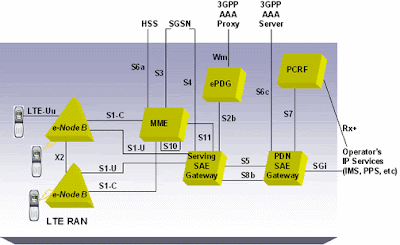Hi Team,
Br kemarin rasanya aku dating ke kantor ini, turun dr bus ATMO, turun di depan RM OJO GELO yang merupakan depannya indosat solo jg. Aku jg masih inget di kenalin am semua keluarga besar indosat solo oleh mbak Novi yang langsung lupa siapa namaxa, cz 1 hr terlalu banyak yg harus aku inget.cm Pak Ajib yg bisa inget karena jenggotnya dan Mz Agung Prabowo dengan besarnya.
khususnya
ALL TECSOL yang mau menerima saya disini, membimbing saya, mengajari saya walaupun keberadaan saya kadang malah bikin runyam ato bikin repot pekerjaan rekans semua. Terima Kasih banyak Pak Rizal dan Pak Mino atas kesempatan yang telah diberikan kpd saya untuk belajar di Indosat Solo.
Terima kasih banyak Pak Dhe n MAng Opick yang telaten dan sabar mengajari ttg BTS, Signalling, BTS manager, Citrix, up/down grade, Create EDGE, pak dhe n pak opick sebagai dosen BSS saya disini, maaf kl saya terlalu lemoot n g cepet menyerap semuanya, dan semoga saya masih bisa berkonsultasi lg.
makasih jg untuk kang Purwo atas bantuan swktu saya tiba pertama kali di Solo dan senyum yg selalu ikhlas dan dr hati yg dalam.
Mz Inal n Mz hate makasih untuk pelajaran Power, Genset, AC, modul, rectifier, semoga saya tidak lupa.
Pak Dodik dan Pak Dili, makasih atas segala support n pelajaran MWnya dan partner CS 1.6.
Satrea Yudha dan Bowo makasih mau memberi saya lemburan.
Pak Untung yang selalu membuat orang tersenyum dan bikin rame OMC.
Pak Ajib makasih bangeet atas pinjaman sepeda opers untuk operasional saya untuk berangkat dan pulang kantor,
mbak hotma yang selalu semangat makasih atas dukungan untuk menyuplai genset.mbak prima yang selalu gembira, makasih atas cerita2 yang lucu dari putra-putranya
Agung Bud WJ makasih atas tebengannya,Prisma n Reza thanks 4 all, yoyon dan nanda yang jauh disana semoga wonogiri lebih maju dengan adanya kalian berdua,
Pak Raharjo makasih banget telah mengikutkan saya dalam TEAM SAS shg saya ada sumber tambahan untuk beli bakso (sama gerobaknya),
Pak Asy makasih atas nasehat dan bimbingannya,
ALL USERS SOLO terima kasih banget atas semuanya
Br kemarin rasanya aku dating ke kantor ini, turun dr bus ATMO, turun di depan RM OJO GELO yang merupakan depannya indosat solo jg. Aku jg masih inget di kenalin am semua keluarga besar indosat solo oleh mbak Novi yang langsung lupa siapa namaxa, cz 1 hr terlalu banyak yg harus aku inget.cm Pak Ajib yg bisa inget karena jenggotnya dan Mz Agung Prabowo dengan besarnya.
khususnya
ALL TECSOL yang mau menerima saya disini, membimbing saya, mengajari saya walaupun keberadaan saya kadang malah bikin runyam ato bikin repot pekerjaan rekans semua. Terima Kasih banyak Pak Rizal dan Pak Mino atas kesempatan yang telah diberikan kpd saya untuk belajar di Indosat Solo.
Terima kasih banyak Pak Dhe n MAng Opick yang telaten dan sabar mengajari ttg BTS, Signalling, BTS manager, Citrix, up/down grade, Create EDGE, pak dhe n pak opick sebagai dosen BSS saya disini, maaf kl saya terlalu lemoot n g cepet menyerap semuanya, dan semoga saya masih bisa berkonsultasi lg.
makasih jg untuk kang Purwo atas bantuan swktu saya tiba pertama kali di Solo dan senyum yg selalu ikhlas dan dr hati yg dalam.
Mz Inal n Mz hate makasih untuk pelajaran Power, Genset, AC, modul, rectifier, semoga saya tidak lupa.
Pak Dodik dan Pak Dili, makasih atas segala support n pelajaran MWnya dan partner CS 1.6.
Satrea Yudha dan Bowo makasih mau memberi saya lemburan.
Pak Untung yang selalu membuat orang tersenyum dan bikin rame OMC.
Pak Ajib makasih bangeet atas pinjaman sepeda opers untuk operasional saya untuk berangkat dan pulang kantor,
mbak hotma yang selalu semangat makasih atas dukungan untuk menyuplai genset.mbak prima yang selalu gembira, makasih atas cerita2 yang lucu dari putra-putranya
Agung Bud WJ makasih atas tebengannya,Prisma n Reza thanks 4 all, yoyon dan nanda yang jauh disana semoga wonogiri lebih maju dengan adanya kalian berdua,
Pak Raharjo makasih banget telah mengikutkan saya dalam TEAM SAS shg saya ada sumber tambahan untuk beli bakso (sama gerobaknya),
Pak Asy makasih atas nasehat dan bimbingannya,
ALL USERS SOLO terima kasih banget atas semuanya












